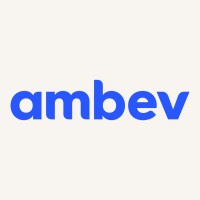Company Cyber Security Posture
NANA
NA Company Details
NA
NA
NA
NA
NA
NA
Scan still pending
NA
NA
Between 200 and 800
This score is AI-generated and less favored by cyber insurers, who prefer the TPRM score.
 NA Global Score
NA Global Score.png)

Company Scoring based on AI Models
| Model Name | Date | Description | Current Score Difference | Score |
|---|---|---|---|---|
| AVERAGE-Industry | 03-12-2025 | This score represents the average cybersecurity rating of companies already scanned within the same industry. It provides a benchmark to compare an individual company's security posture against its industry peers. | N/A | Between 200 and 800 |
Company Cyber Security News & History
| Entity | Type | Severity | Impact | Seen | Url ID | Details | View |
|---|
Company Subsidiaries

NA
Access Data Using Our API

Get company history
.png)
NA Cyber Security News
PRAN-RFL plans to invest Tk 680cr Habiganj Industrial Park -
Pran-RFL has become of the largest private industrial parks in the country in terms of size, Kamal said. One of the objectives of PRAN-RFL Group ...
‘IT expert’ Zoha goes missing
Tanvir Hasan Zoha, 32, was abducted from Kachukhet area around 1:00am while he was returning to his Kalabagan residence with a friend by a CNG-run three-wheeler ...

NA Similar Companies

Little Caesars Pizza
ABOUT LITTLE CAESARS® Headquartered in Detroit, Michigan, Little Caesars was founded by Mike and Marian Ilitch in 1959 as a single, family-owned restaurant. Today, Little Caesars is the third largest pizza chain in the world, with stores in each of the 50 U.S. states and 27 countries and territor

Ambev
Hey there! Welcome. Here at Ambev, there are lots of people and amazing projects beyond our labels! Let’s talk about that. We believe that having a big dream requires just the same effort as having a small one. That is why our big dream began back in the 1880s, with a team determined to make thi

Thai Beverage PLC
ThaiBev was established in 2003 to consolidate a number of leading spirits and beer businesses in Thailand belonging to our founding shareholders and other investors. In 2006, we registered ThaiBev's listing on the Singapore Exchange (SGX), and subsequently expanded to the non-alcoholic beverage and

Coca-Cola Beverages Africa
Coca-Cola Beverages Africa (CCBA) bottles and distributes beverages trademarked by The Coca-Cola Company (TCCC) or TCCC’s affiliated entities and is the world’s 8th largest Coca-Cola bottler by revenue. CCBA has over 17 000 employees across its operations in Africa with more than 42 bottling plants

Shree Renuka Sugars Limited
Shree Renuka Sugars is the fifth largest sugar manufacturer with a capacity of 40,000TCD and the largest refiner with a capacity of 4000TPD in India. Company accounts for 20% of India’s sugar exports and is the leader in fuel ethanol with a 20% market share. Company’s current power and ethanol produ

CHAGEE
CHAGEE is a leading international tea beverage company guided by the vision to connect everyone through a good cup of tea. The brand first started in 2017 in the hometown of tea, Yunnan, China, and has since expanded to over 6,000+ stores globally. As we embrace innovation and introduce a modern tw

Frequently Asked Questions
Explore insights on cybersecurity incidents, risk posture, and Rankiteo's assessments.
NA CyberSecurity History Information
How many cyber incidents has NA faced?
Total Incidents: According to Rankiteo, NA has faced 0 incidents in the past.
What types of cybersecurity incidents have occurred at NA?
Incident Types: The types of cybersecurity incidents that have occurred include .
Additional Questions
What Do We Measure?
















Every week, Rankiteo analyzes billions of signals to give organizations a sharper, faster view of emerging risks. With deeper, more actionable intelligence at their fingertips, security teams can outpace threat actors, respond instantly to Zero-Day attacks, and dramatically shrink their risk exposure window.
These are some of the factors we use to calculate the overall score:
Identify exposed access points, detect misconfigured SSL certificates, and uncover vulnerabilities across the network infrastructure.
Gain visibility into the software components used within an organization to detect vulnerabilities, manage risk, and ensure supply chain security.
Monitor and manage all IT assets and their configurations to ensure accurate, real-time visibility across the company's technology environment.
Leverage real-time insights on active threats, malware campaigns, and emerging vulnerabilities to proactively defend against evolving cyberattacks.




